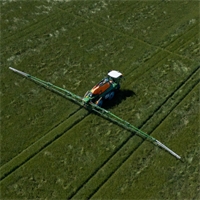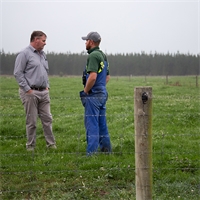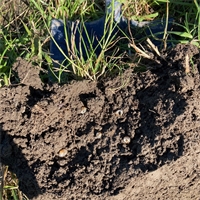12Apr
Options to consider when preparing for winter
WORDS AND IMAGES SUPPLIED BY JUSTIN KITTO, DAIRYNZ LEAD ADVISOR
While many of us aren’t quite ready to say goodbye to summer, we do need to look ahead and start planning for winter.
I am continually impressed by the efforts of farmers putting good wintering practices in place, ensuring they care for their animals no matter the conditions. There is good work happening on farm, and our recent DairyNZ wintering survey emphasised this, with some great achievements, including:
• The proportion of farmers with written wintering plans has improved, increasing to 80%.
• There has been a significant increase in the proportion of farmers with a written contingency plan.
• 74% of farmers implemented at least five good management practices to support their cows and manage winter conditions.
• 96% of farmers said they had strategies to provide comfortable lying conditions.
Another finding from last wintering season was that the use of portable troughs and back fencing had a lower uptake rate and hasn’t increased over the last three seasons. They are options to consider should you be looking to lift performance on your farm this winter.
The benefits of portable troughs and back fencing
I have seen the benefits of using these on several farms and encourage all farmers to consider how they can add them into their winter plans.
The two main benefits farmers talk about both relate to better soil conditions:
1. Paddocks dry out sooner—you can get equipment in early and get something else growing more easily.
2. Soils are less damaged by cows moving back and forth, so when the wet weather does arrive, back fences can be extended or dropped to provide more area to cows to aid lying time.
For those concerned about the added hassle of using portable troughs, there are some great number 8 wire solutions recommended by farmers who have used them successfully.
Creative ideas include the installation of skis for ease of movement; putting the troughs under fences from neighbouring grass paddocks to avoid dragging through mud; and putting the troughs on trailers.
Identifying comfortable lying surfaces
Portable troughs and back fencing are part of a great winter tool kit to help provide comfortable lying surfaces for as long as cows want to lie down. Since cows require a minimum of 8 – 10 hours of lying time per day, it’s important to ensure that conditions are sufficient for them to lie comfortably when they want.
The range of strategies available include shifting them to a drier, lower risk paddock, or using crops positioned in drier or more sheltered areas for grazing during bad weather.
A question for some may be, “how do you decide when the conditions aren’t right for sufficient lying time?”. The gumboot score is a tried-and-true method; however, we have heard of a few other quirky but sensible ways of identifying this. “If the mud pulls your red bands off, it is too wet for the cows to lie on”. Or “If I won’t lie down in that paddock, I shouldn’t expect my cows to lie down in it either”.
Whatever your strategy for identifying a comfortable lying surface, it is important to have a firm boundary in mind for when you need to implement a contingency plan.
Outline what these are in your written wintering plan, including your portable trough and back fence strategy, then share it so everyone is on the same page before the cold weather arrives.
More information is available at dairynz.co.nz/ wintering
Back to Real Farmer
Related

Newly appointed Ruralco Director Andrew Barlass has spent the last few years returning to his roots,...
Read More

Strawberry and elderflower mocktails embody the essence of summer in a delightful non-alcoholic conc...
Read More

In this update, we will be looking at what is happening on farm over the next three months regarding...
Read More

The autumn period has again produced a consistent spell of warmer weather and with a steady stream o...
Read More

Grass grub larvae may be small, but as many farmers found in autumn 2021, they’re capable of causin...
Read More

Step it up this summer with some iconic family-friendly walks located around Canterbury.
Read More